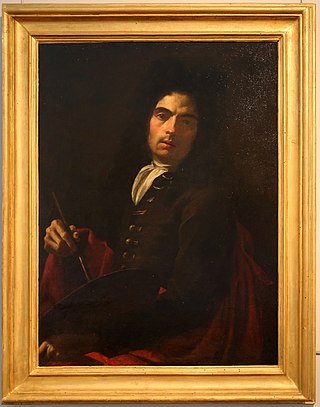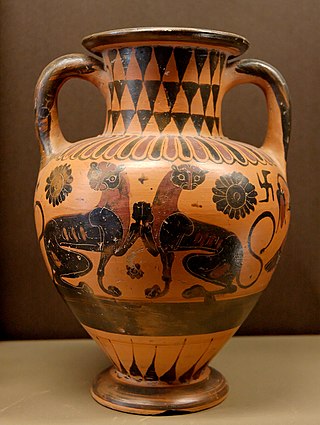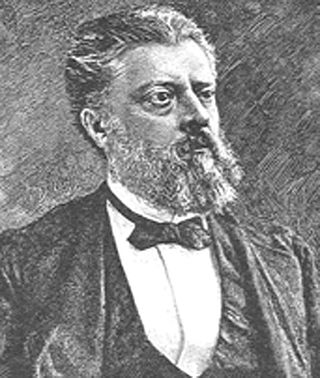
Corrado Giaquinto was an Italian Rococo painter.

Hermonax was a Greek vase painter working in the red-figure style. He painted between c. 470 and 440 BC in Athens. Ten vases signed with the phrase "Hermonax has painted it" survive, mainly stamnoi and lekythoi. He is generally a painter of large pots, though some cups survive.
Alberto Melloni is an Italian church historian and a Unesco Chairholder of the Chair on Religious Pluralism & Peace, primarily known for his work on the Councils and the Second Vatican Council. Since 2020, he is one of the European Commission's Chief Scientific Advisors.

Paolo Orsi was an Italian archaeologist and classicist.

Pelagio Palagi was an Italian painter, sculptor and interior decorator.

Chalcidian pottery is an important style of Western Greek black-figure vase painting.

Pseudo-Chalcidian vase painting is an important style of black-figure Greek vase painting, dating to the 6th century BC.

Giuseppe Amisani was an Italian portrait painter of the Belle Époque.

The Painter of the Berlin Dancing Girl was an Apulian red-figure vase painter, who was active between 430–410 BC. He was named after a calyx krater in the collection of the Antikensammlung Berlin, which depicts a girl dancing to the aulos played by a seated woman.

Raffaele Tafuri (1857–1929) was an Italian painter. He was born on January 27, 1857, in Salerno. He died in 1929 in Venice.
Marcello Landi (1916–1993) was an Italian painter and poet.
Lamberto Loria was an Italian ethnographer, naturalist and explorer.
The following is a timeline of the history of the city of Bari in the Apulia region of Italy.
The following is a timeline of the history of the city of L'Aquila in the Abruzzo, a region of Italy.

The necropolis of Santu Pedru is an archaeological site of the municipality of Alghero, Sardinia.

Giovanni Battista Ramenghi was an Italian painter. He is sometimes known as Bagnacavallo junior or Bagnacavallo the Younger to distinguish him from his father Bartolomeo Ramenghi.

The Jatta National Archaeological Museum in Ruvo di Puglia, a historic and artistic city in southern Italy, is housed in rooms of Palazzo Jatta and represents the only example in Italy of a nineteenth-century private collection that has remained unaltered from its original museographic concept. The finds preserved in the museum were collected by the archaeologist Giovanni Jatta in the early nineteenth century and his collection was subsequently enriched by his nephew of the same name and was sold to the Italian state in the twentieth century.

The culture of Apulia, the region that constitutes the extreme southeast of the Italian peninsula, has had, since ancient times, mixed influences from the West and the East, due to its strategic position near the transition zone between these two cultural regions. Its location, on the west coast of the Adriatic and Ionian seas, the natural southern border between Western Europe and the Balkans and Greece, made it a bridge to the East since antiquity, and in the Middle Ages, it was a cultural frontier between the Roman-Germanic West and the Greek-Byzantine East.

Count Michele Pironti was an Italian politician and patriot, senator and Minister of Justice of the Kingdom of Italy.
This page is based on this
Wikipedia article Text is available under the
CC BY-SA 4.0 license; additional terms may apply.
Images, videos and audio are available under their respective licenses.














